Allen and Susan Crawford founded Plankton Art Company in 1996.
As an illustrator, artist, designer, and writer, Allen has worked on a wide array of creative projects: advertising campaigns, editorial illustrations, animations, short films, copywriting, packaging, product design, gallery shows, logos, identity systems, typefaces,and books.
Allen and Susan’s most notable joint project to date is their series of 400 identification key illustrations for the Milstein Hall of Ocean Life at the American Museum of Natural History. Their keys are on permanent display.
Allen wrote, illustrated, and designed The Affected Provincial’s Companion (Bloomsbury 2006), which was optioned for film by Johnny Depp’s production company, Infinitum Nihil.
His latest book, Whitman Illuminated: Song of Myself (Tin House 2014), is an illustrated edition of Walt Whitman’s epic poem. The entire 256-page book is written by hand, and has won numerous awards and is available on Amazon here.
Allen wrote, directed, edited, and performed in an eight-part series of short films for Hendrick’s Gin, in which he praises the hidden virtues of the Seven Deadly Sins. A few of these videos are posted on his Motion page.
To learn more about Allen Crawford visit his website at www.allencrawfordillustration.com
©All Rights Reserved, Allen Crawford
And now for our exclusive interview with illustrator Allen Crawford.
How would you describe your art?
I work in a lot of different modes—writing, collage, drawing, design—so I wouldn’t describe the various looks or style of my work. The styles I work in changes to suit the needs of the project at hand, but the sensibility behind my work tends to stay the same.
How long have you been an artist and how did you become an artist?
I’ve always drawn and made things. I’m not an “artist” in a narrow sense, that is to say, someone with gallery representation and all that comes with that. I’m a maker, for lack of a better term. I hop around from medium to medium, whatever will suit my idea is where I go, and I often have to conduct my education in public. It’s a kind of exploration. If I know I am able to pull off a project without any trouble, my interest lessens considerably. I don’t like to repeat myself. I’m still learning how to be a maker.
What is your favorite medium and why?
Pen and ink is the medium I started with. I’m not really a painter: I’m a draftsman. I like the crisp flatness of the medium and the resistance between the pen and paper as I make the image. My line is not very graceful and I’m not a virtuoso, but that has never interested me. Facility for its own sake bores me. I like the liveliness of imperfection.
Pick one work of art from your portfolio and tell us the story behind it. Why does this piece have meaning to you? What steps did you take to create the piece?
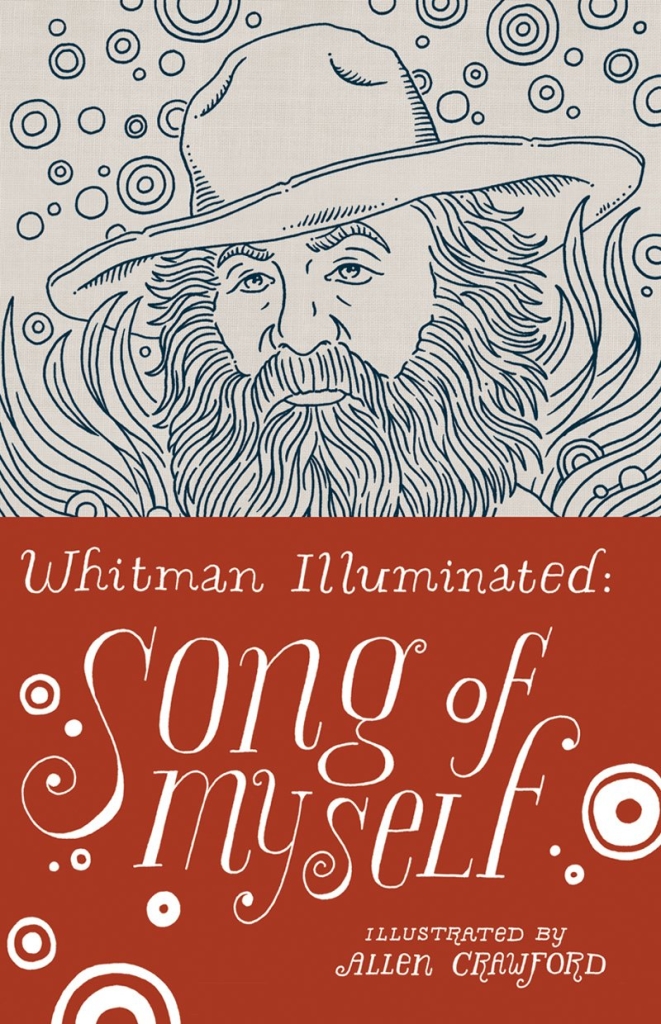 I’ve recently completed a 256-page illustrated and hand-lettered edition of Walt Whitman’s poem, “Song of Myself”. The entire book was drawn by hand, right down to the copyright information and price on the back. I spent a year in my basement interpreting clusters of Whitman’s verse, being careful to exhaust one theme before moving onto the next spread. Each spread took ten hours to conceive and execute. I started from scratch every morning, with a blank page. There was no time to think ahead, so the book became a journal of my journey through Whitman’s poem. The naturalistic themes and the lack of metaphors made it a daunting challenge, as was the challenge of maintaining a fresh eye. I wanted to make the book artfully artless, like Whitman’s poetic style. The book is designed to impede the reader’s progress to an extremely slow pace, so slow that the book must be absorbed rather than read. This will force the reader to internalize the poetic landscape to such a degree that the poet will leave an indelible impression. It will be with them for life, hopefully. I resorted to pen and ink, my most trusted medium.
I’ve recently completed a 256-page illustrated and hand-lettered edition of Walt Whitman’s poem, “Song of Myself”. The entire book was drawn by hand, right down to the copyright information and price on the back. I spent a year in my basement interpreting clusters of Whitman’s verse, being careful to exhaust one theme before moving onto the next spread. Each spread took ten hours to conceive and execute. I started from scratch every morning, with a blank page. There was no time to think ahead, so the book became a journal of my journey through Whitman’s poem. The naturalistic themes and the lack of metaphors made it a daunting challenge, as was the challenge of maintaining a fresh eye. I wanted to make the book artfully artless, like Whitman’s poetic style. The book is designed to impede the reader’s progress to an extremely slow pace, so slow that the book must be absorbed rather than read. This will force the reader to internalize the poetic landscape to such a degree that the poet will leave an indelible impression. It will be with them for life, hopefully. I resorted to pen and ink, my most trusted medium.
Tell us about one medium, technique or style that you would like to try working with (that you have not tried before) and why you would like to try this.
I would like to try music someday, mainly because I know so little about how to make it. I’m unencumbered by any prejudices in that way, that I might be able to do something fresh in that mode. Provided I have any aptitude for it, that is—which I may not. But it would be a fun adventure. But right now, I am concentrating on doing more books: books with playful use of text and type, books featuring charts, books that are densely illustrated. I hope to have six books to my credit before I’m sixty, each of them completely different from the last in look and concept. There is much work to do.
How do you make time for art?
It’s how I make a living! There’s no day job or Plan B. Either I make art every day, or I starve. So art has all the time it needs. I’d be lousy or mediocre at anything else. I have a speculative mindset, which will land you in the soup in any other line of work.
If you could imagine the “perfect art day” for yourself, what would it be like?
I’ve had them, particularly with this Whitman book. Best of all is the day you’ve completed a long, challenging project that has tested your mettle thoroughly, and you’ve managed to pull it off, and you’re at liberty again to get hit by a bus. The book can live on without you: it’s out of your head, and in the world. That’s a marvelous feeling. So is the feeling that you’ve broken new ground or have done something fresh. It’s a very pleasant delusion, at least.
If you could spend 24 hours with one artist, living or historical, who would you want to spend the day with and why? What would the two of you do?
Oh, I would never want to meet my heroes: I have them right where I need them. The best of who and what they were, and the things they most wanted to share with us are still with us; I don’t need to know how their table manners are. They are most helpful to me from a distance.
However, it’s nice when you get a kind word of praise from an artist you admire, though – Milton Glaser, a giant in the world of graphic design and possibly it’s most eminent living practitioner, was kind enough to send me a handwritten letter, praising my Whitman book. That meant a great deal to me, more than any award. I keep it someplace very special.
Do you have any tips or advice for aspiring artists?
The odds are against you, so keep a low overhead, learn the business end of things, take some smart, calculated risks when you have to, and work like hell. Don’t go into a huge amount of debt if you can’t afford it: that might mean finding an alternative to art school (I attended a cheap state college which gave me a solid education in many subjects, but my work isn’t really dependent on technical facility so that wasn’t as huge a disadvantage as it sounds). Unlike other professions, what really matters is the work; most of the things worth knowing in this profession I learned on the job. I’ve been in this business for twenty-five years and no one has ever asked me where I went to college, or if I even went to college. If you can do the work, you’ll get work. This is as much a trade as it is a profession: we’re makers.
It’s not the most secure line of work, but what are these days? You may as well charge ahead for what you want to do with your life. You should at least try. I’ve also found that talent is cheap: art schools are full of talented people. What matters is learning how to apply that talent, having something to say: you need a mind to go with your hand, so cultivate a wide breadth of knowledge that you can bring immediately to bear on your projects. Being a graphic artist is like being a journalist: your work can be a vehicle, a means to explore the world. You need to be interested in everything because you are reflecting the world in your work.
I wish you all the luck in the world. Amaze us!



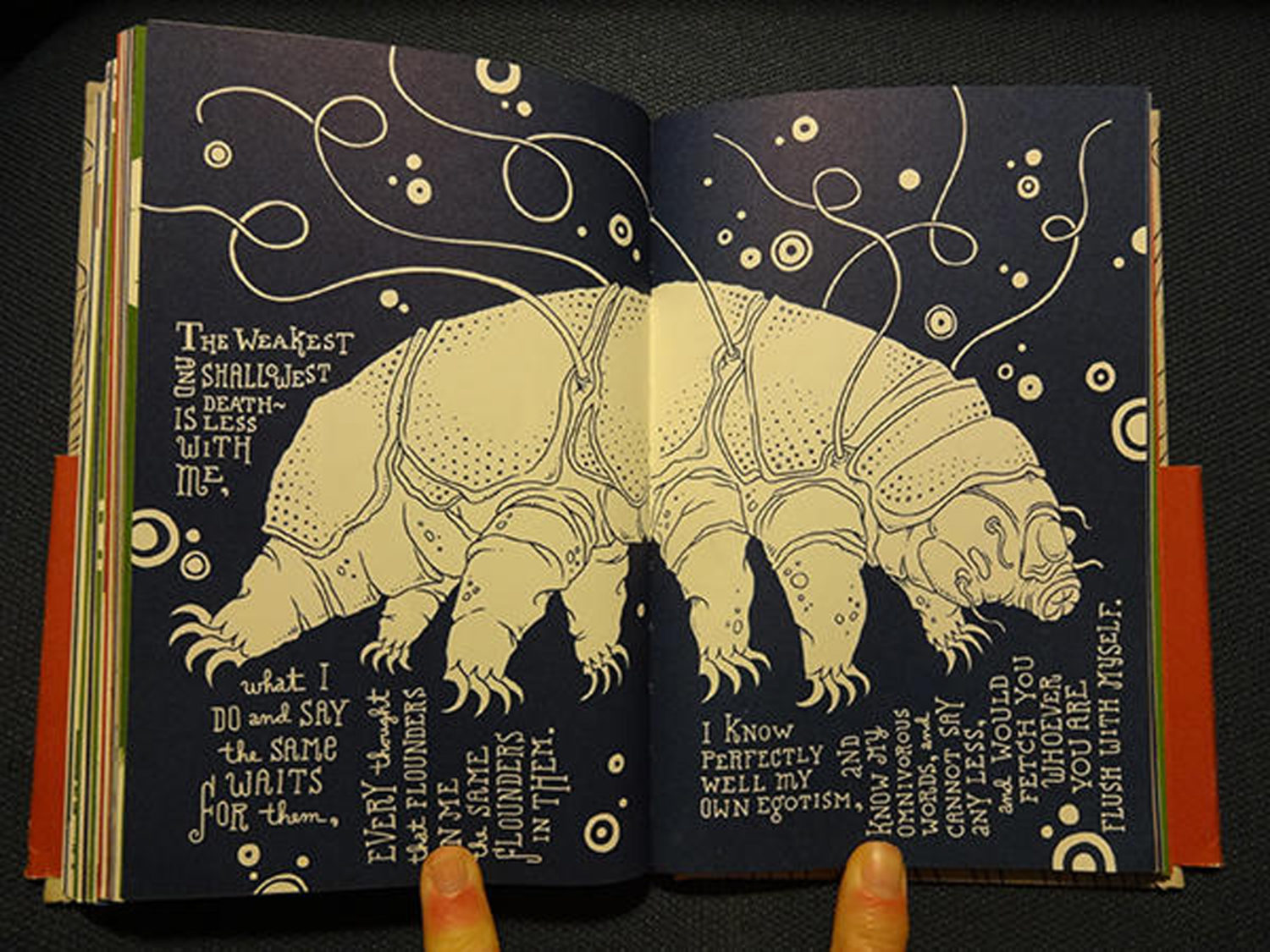

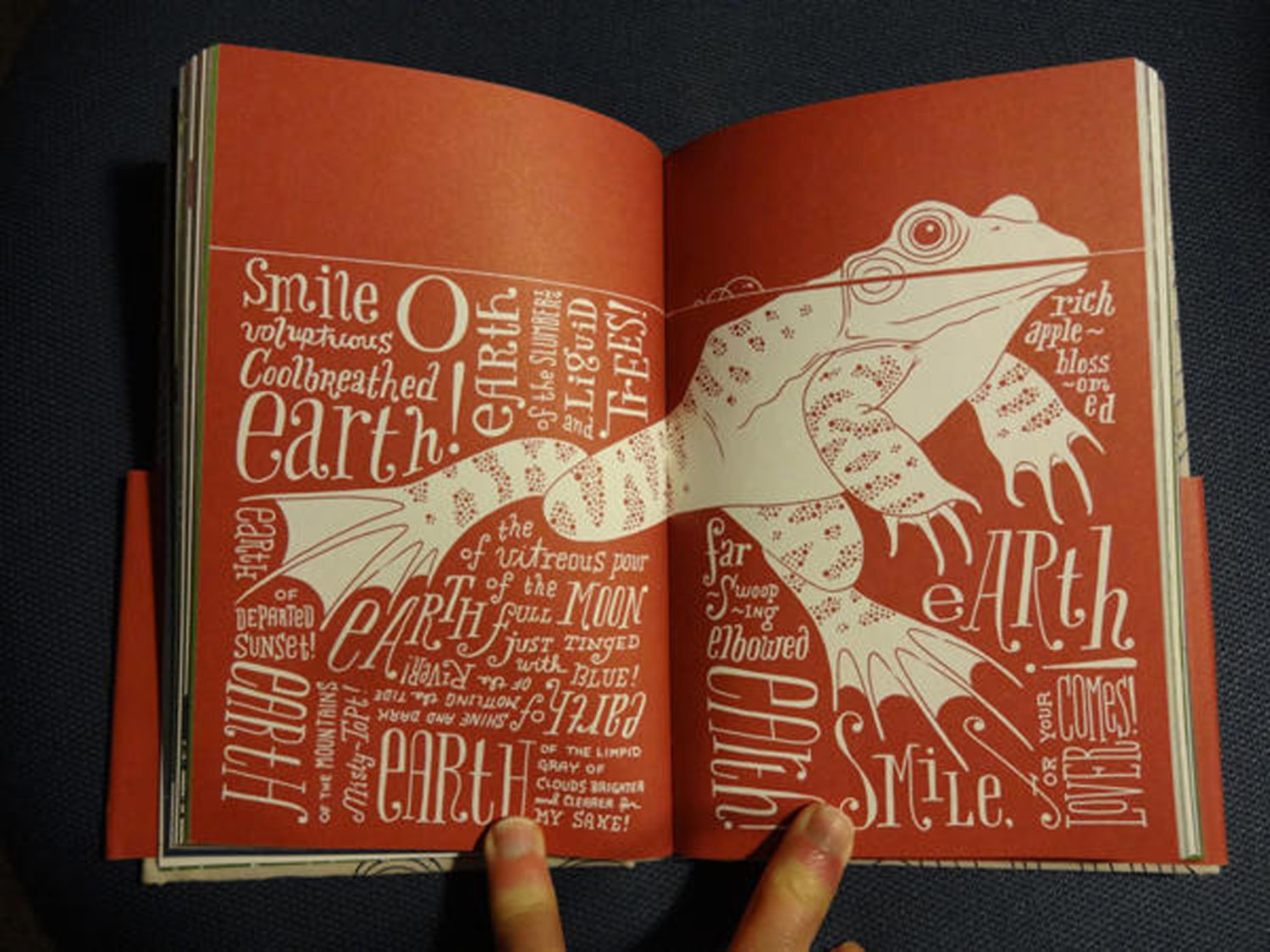
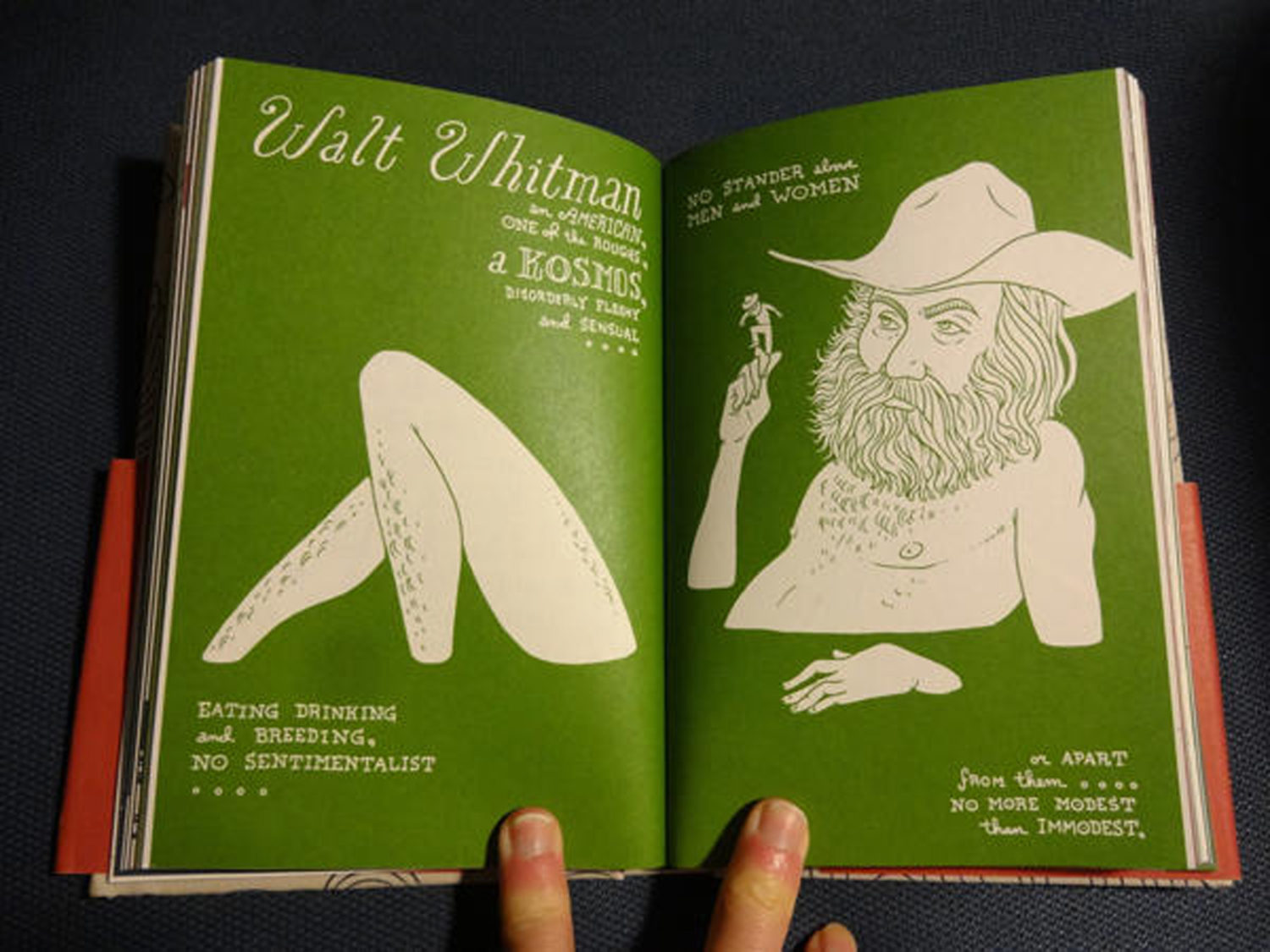

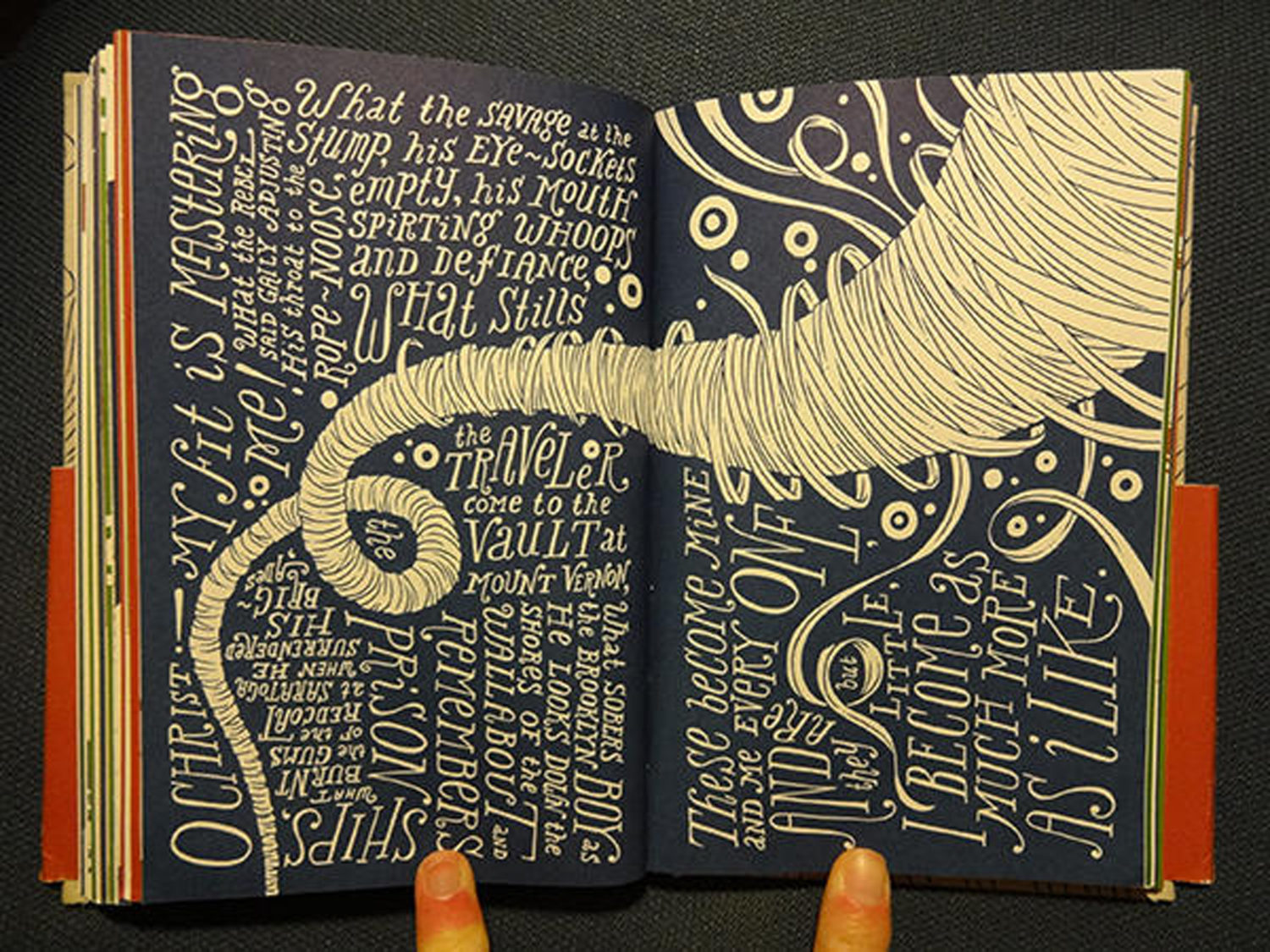

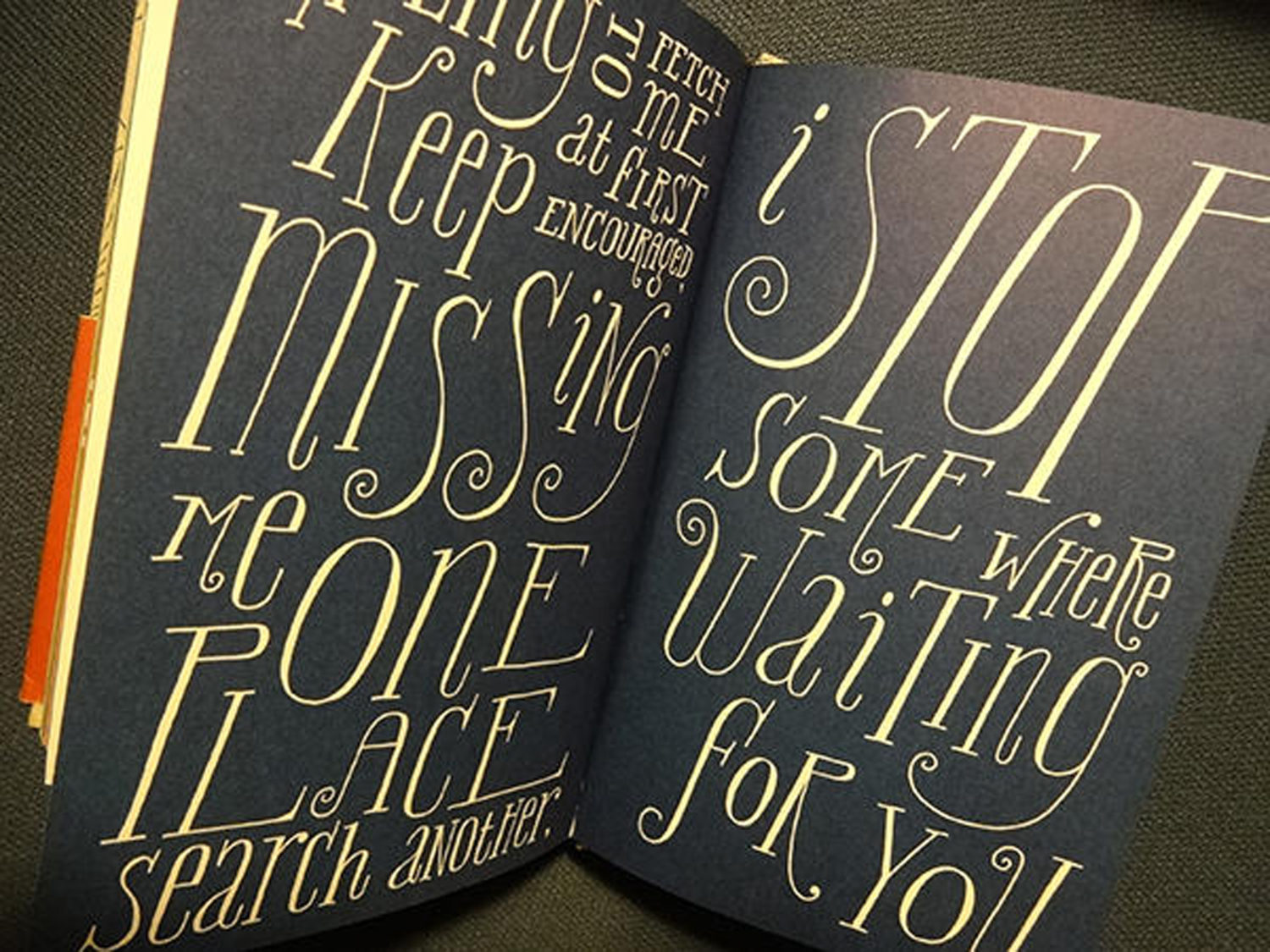

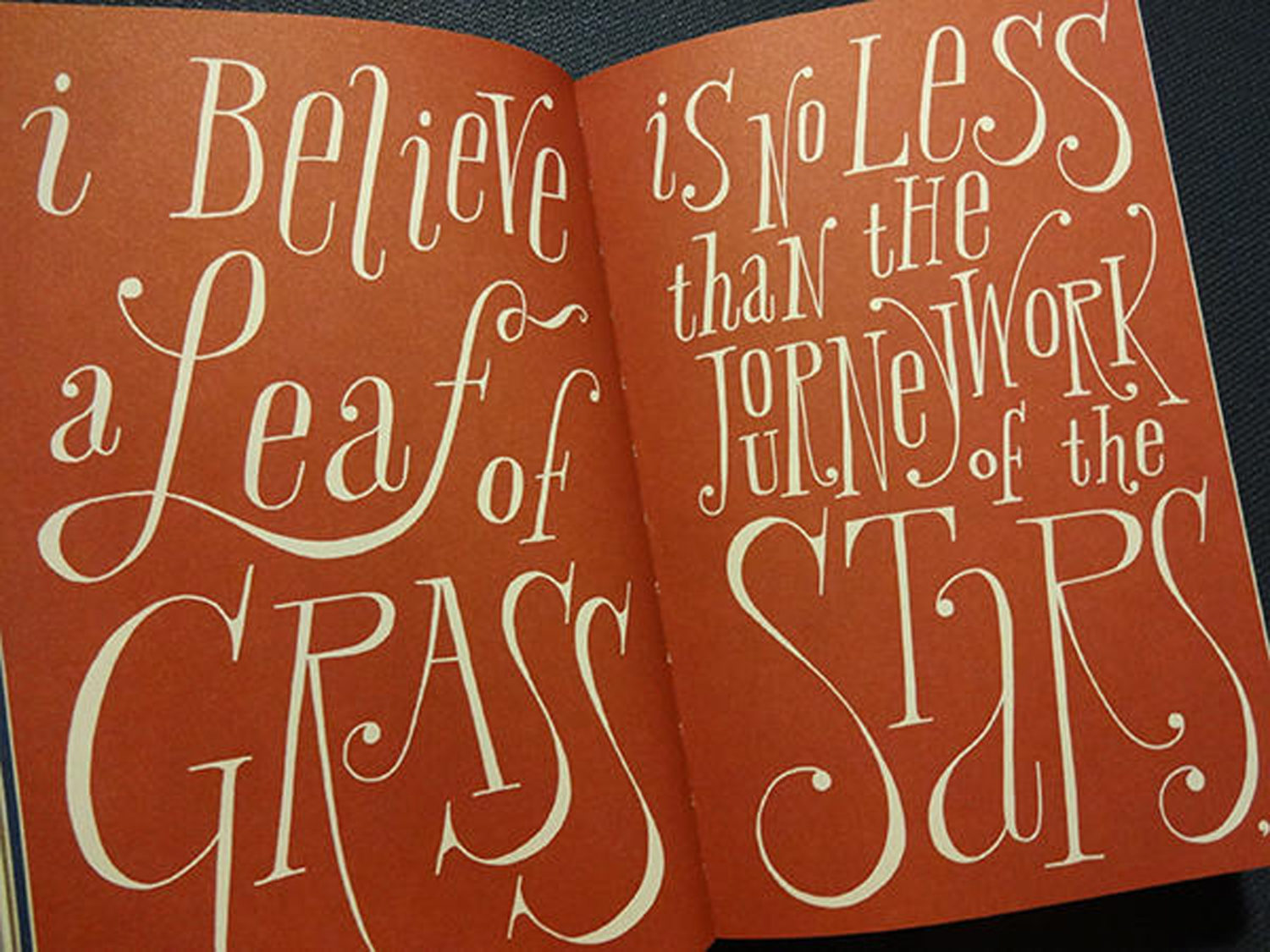

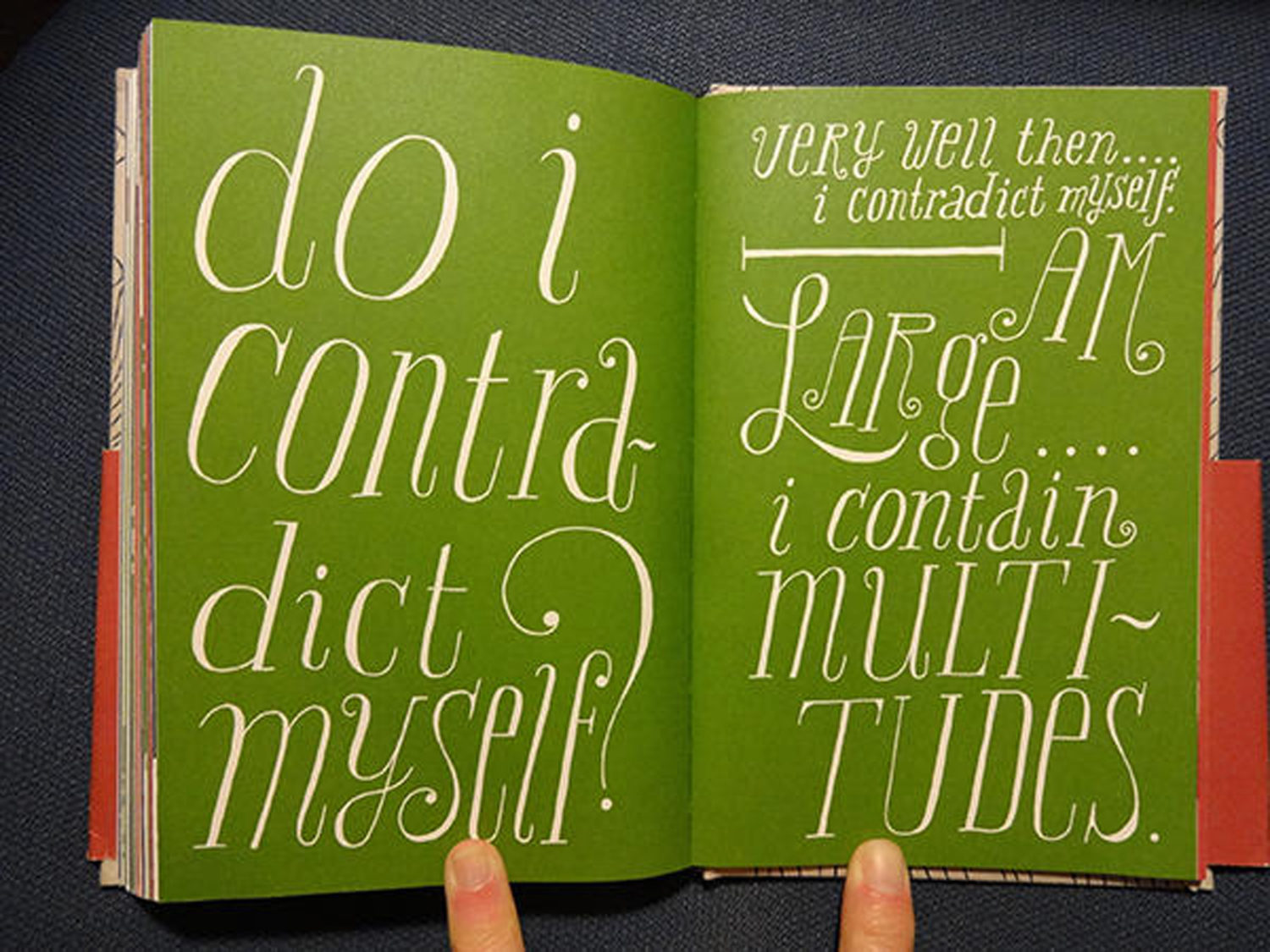
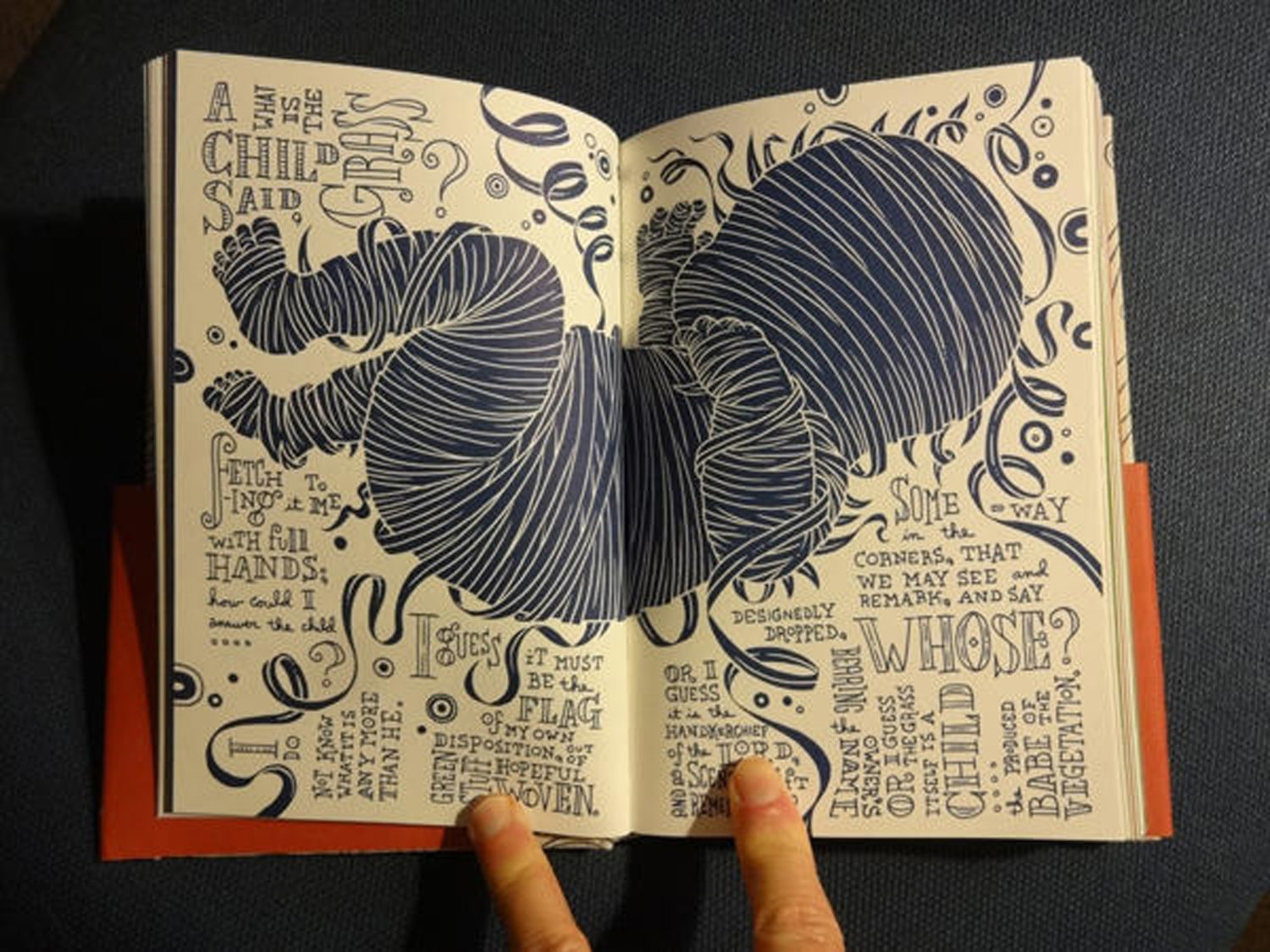
Love the videos. GREAT looking book.
So awesome!
Wonderful video! Inspiring interview, and great works! Wow!
Thank you!